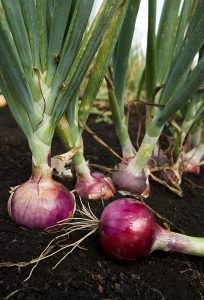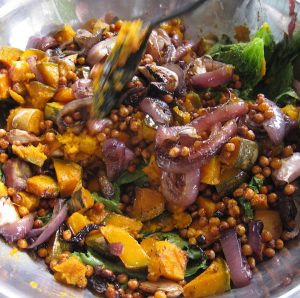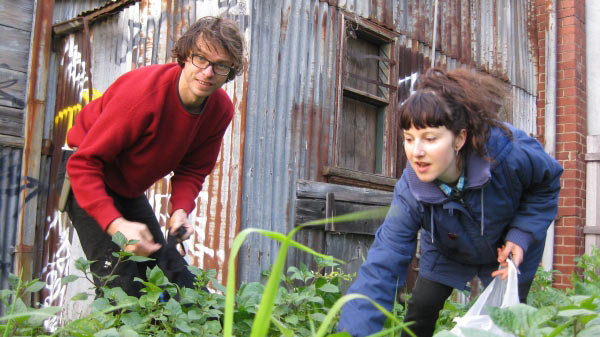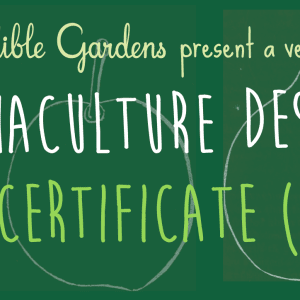 Allium Cepa
Allium Cepa
Family: Alliacaeae
Onions are used in countless ways from crunchy onions rings to pickles and stir fries. They form an important basis of most cooking traditions of the world. The poor onion is often a neglected home produce crop and we would love to see our friends growing them at home chemical free. They keep so well and one less thing to put in the fridge means a smaller fridge, or a fridge that can be shared, fridge pooling – the way of the future!
History
Onions have been an important part of the diet of humans on most continents because they are so easily moved and stored without spoiling. Although they have a very pungent taste when cooked have become universally accepted in diets the world over. They were used by ancient Egyptians, Greeks and Romans. It is originally from the South Asia including India, although some believe it has grown wild on most continents in some form.
Varieties
- White Lisbon – this is a good bunching onion for dense plantings.
- Red Wethersfield – Beautiful purple-red skin.
- Creamgold – long storage life.
- Potato Onion – this is a multiplier type and produces reasonable bulbs in limited space.
Health and Nutrition
Onions are extremely good for you, particularly raw. They contain vitamin C, iron, sulphur and fibre. Historically they have been used to treat Asthma. It has been known to be anti-inflammatory, antiseptic and is a useful first aid on bee stings. Studies have shown that onions lower blood pressure. They are a very good source of vitamins B6, C, B1 and K.
Cultivation
When to sow
Only recently have onions been developed to grow bulbs with a shorter day length and these can be planted in Melbourne in Autumn and can be used in early spring, but care should be taken to make sure you have a cultivar suited to this function. In all cultivars bulbing increases with temperature.
Spacing
Long varieties can be planted as close as 3cm apart and NSW agriculture uses the figure of 60-70 onions per square metre for Creamgold (large, good storage) so you can get a good crop of onions in if you are a serious player.
Soil depth
Direct seeding is usually preferred with most varieties and can be broadcast then thinned to allow good bulb size.
Time to harvest
Autumn and winter sown seed can take about 9 months till harvest.
Requirements
Onions do best in a Mediterranean climate because the hot dry summers insure full ripening which makes Melbourne an ideal location for growing them. Cool weather is required for early growth stage. They do not thrive in soil with a pH below 6.0 because you will find trace elements are unavailable for plant uptake. They like a fairly fertile and well drained soil. Do not add any extra nitrogen amendments such as fish fertiliser or chicken manure, as onions don’t need or like excess nitrogen – it softens the bulb and reduces shelf-life. Zinc and calcium are the most important of the minor elements and may be an issue if you haven’t applied a good compost made of a wide variety of ingredients.
Harvesting
Harvest with at least 3cm of stem when most of the plants have leaves are drooping to the ground and then hang in mesh bags in the air to cure.
Pests and Diseases
The main pests to watch out for in Australia are thrips, seedling maggot and cutworms. The major disease problems are downey mildew, aspegillus black mould and botrytis.
 Preparation
Preparation
There’s barely a culinary tradition in the world that does not feature onions. Can you imagine a world without them? The number one rule to cooking, the world over, is brown the onions a little first!



